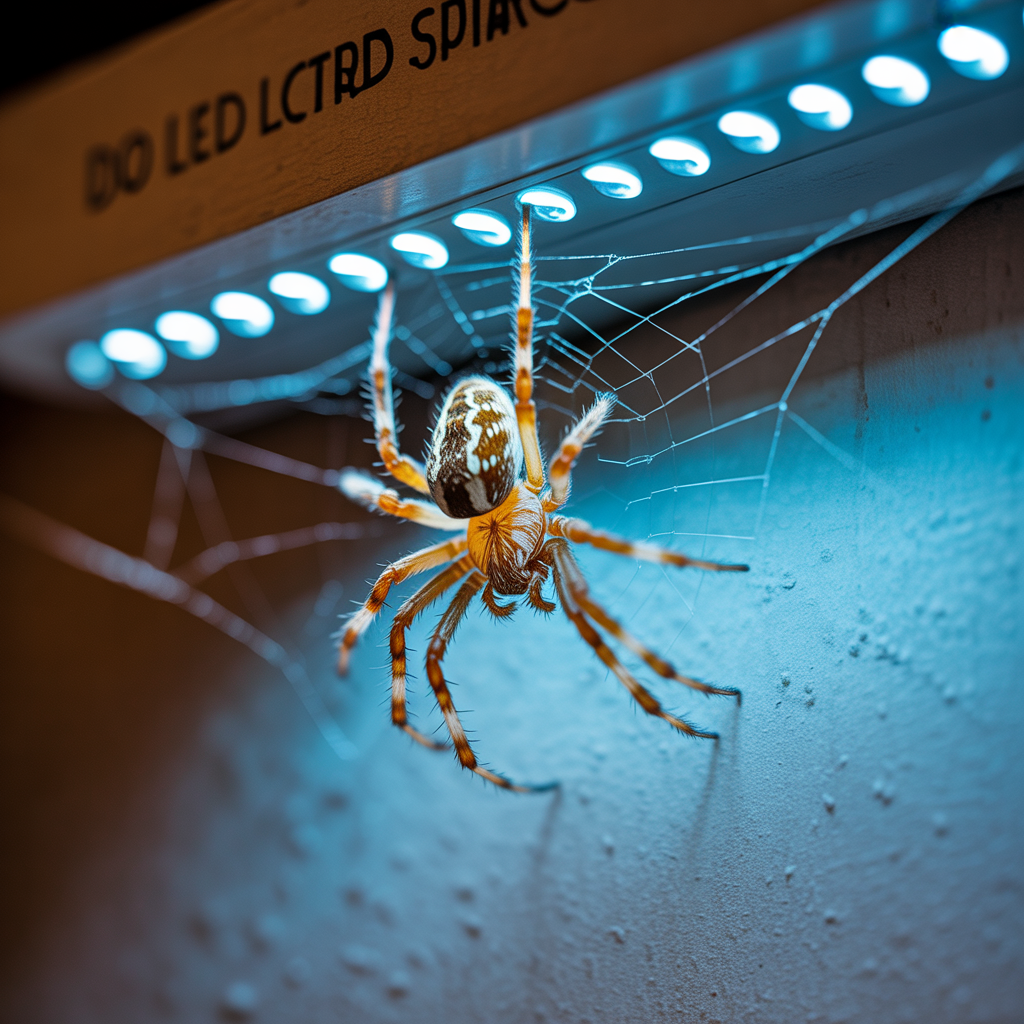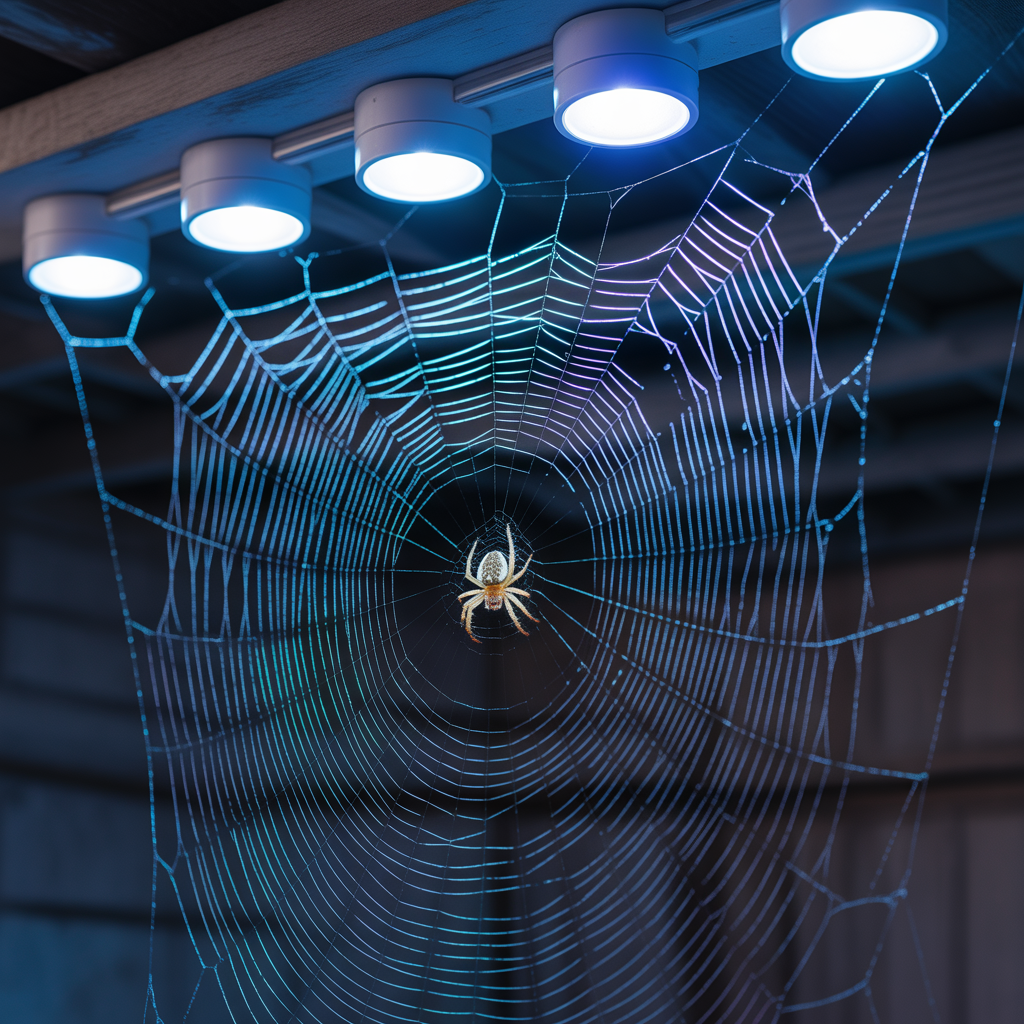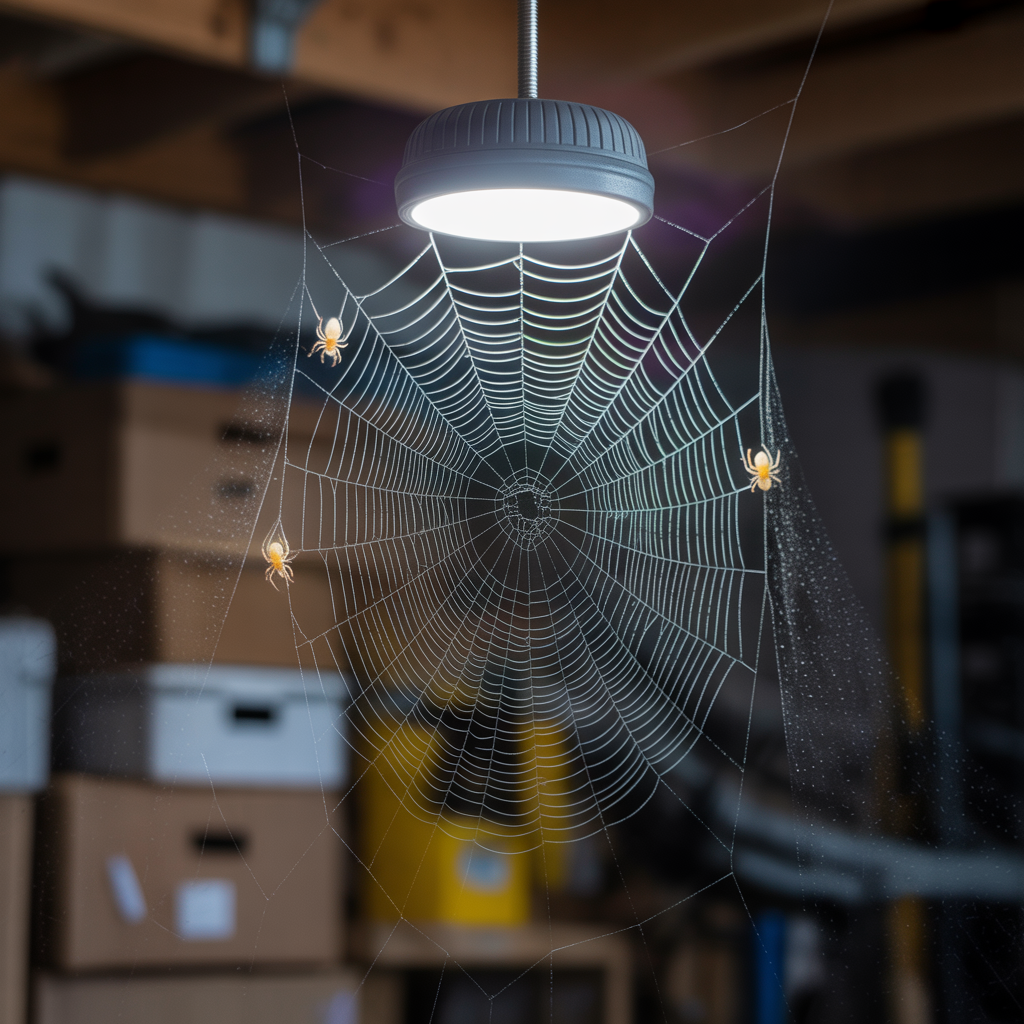Do LED Lights Attract Spiders? The Official Answer For You
Many people wonder, Do LED lights attract spiders? This article will delve deep into this question, exploring the science behind insect attraction to light, the specific characteristics of LED lights that might influence spider behavior, and the broader context of spider infestations in homes. We’ll explore different types of lighting, consider alternative explanations for spider…
Many people wonder, Do LED lights attract spiders? This article will delve deep into this question, exploring the science behind insect attraction to light, the specific characteristics of LED lights that might influence spider behavior, and the broader context of spider infestations in homes. We’ll explore different types of lighting, consider alternative explanations for spider presence, and offer practical solutions to manage spider populations effectively. Get ready to learn everything you need to know about LED lights and spiders!
LED lights do not directly attract spiders. However, they attract insects like flies and moths, which are prey for spiders. As a result, spiders may be found near LED lights due to the presence of food, not because they are attracted to the light itself.
Insects, including many that spiders prey upon, exhibit a behavior called phototaxis, an innate response to light. Positive phototaxis means they’re drawn to light sources, while negative phototaxis means they avoid them. Many flying insects, like moths, exhibit strong positive phototaxis, leading them towards artificial lights at night. This behavior isn’t fully understood, but it’s thought to be related to their navigation using celestial cues.
Do LED Lights Attract Spiders?
The Wavelength Spectrum and Insect Attraction

Different wavelengths of light affect insects differently. UV light, for example, is highly attractive to many insects. While LED lights encompass a broad spectrum, the specific wavelengths emitted can influence insect attraction. Some wavelengths are more attractive than others, and the intensity of the light also plays a significant role. A brighter light will generally attract more insects.
Read More: Do LED grow lights work? Do They Actually Work? A Comprehensive Guide
LED Lights and Their Specific Characteristics
The Spectrum of LED Lights
LED lights offer a wide range of color temperatures, from warm white to cool white, and even colored LEDs. These different color temperatures emit different wavelengths of light, potentially affecting insect attraction. Cool white LEDs, for instance, often emit more UV light than warm white LEDs, potentially attracting more insects.
Intensity and Insect Behavior
The intensity of an LED light also matters. A brighter LED light will naturally attract more insects than a dimmer one. This is simply because it’s more visible from further away, increasing the chances of insects detecting it. This, in turn, can indirectly increase the number of spiders around the light source, as they follow their prey.
Do LED Lights Specifically Attract Spiders?

Indirect Attraction: Prey Availability
While LEDs don’t directly attract spiders, they attract insects that spiders prey on. Therefore, the presence of many insects near an LED light source creates a convenient hunting ground for spiders. This is the primary reason you might see more spiders around LED lights, particularly at night.
Other Factors Influencing Spider Presence
It’s crucial to remember that numerous other factors contribute to spider infestations in homes. These include the availability of food sources (like other insects), suitable habitats (dark, secluded spaces), and environmental conditions (temperature, humidity). The presence of LED lights is just one piece of the puzzle.
Read More: 15 Creative Exposed Ceiling Lighting Ideas | Don’t Miss
Comparing LED Lights to Other Light Sources
Incandescent Bulbs and Insect Attraction
Traditional incandescent bulbs emitted a significant amount of heat and infrared radiation, in addition to visible light. This heat can be attractive to certain insects, and their infrared output could also play a role. However, incandescent bulbs are less efficient and less environmentally friendly.
Fluorescent Lights and Insect Attraction
Fluorescent lights, though efficient, also emit light across a range of wavelengths that can attract some insects. They are also a more popular option in homes compared to incandescent lights. However, they are also less efficient than LED lights.
The Comparative Attractiveness of Various Light Sources
Studies comparing the attractiveness of different light sources to insects have shown variable results. The specific wavelengths emitted, the intensity of the light, and the surrounding environment all play a significant role.
Debunking Myths and Misconceptions

The “Ultraviolet Light Myth”
Some believe that all UV light automatically attracts insects. However, while UV light can be attractive, it’s not the only factor determining the attraction of insects. The intensity and overall spectrum of light are also crucial.
The “LED Specific Repellent” Myth
There’s no scientific evidence suggesting that LEDs inherently repel spiders or insects. While specific LED light frequencies may be less attractive than others, this isn’t a guaranteed deterrent.
Read More: Can You Throw Away LED Light Bulbs? Know The Truth
Managing Spider Populations Effectively
Environmental Control: Removing Attractors
The most effective way to manage spider populations is to reduce the availability of their food sources (other insects) and suitable habitats. This involves cleaning regularly, sealing cracks and crevices, and keeping clutter to a minimum.
Effective Pest Control Methods
Using safe and environmentally friendly pest control methods to control insect populations will indirectly reduce the number of spiders. Avoid using harsh chemicals unless absolutely necessary.
Using Light Strategically
While you can’t fully prevent insects from being attracted to light, you can minimize the impact. Consider using lower-intensity lights, choosing warmer color temperatures (they may be less attractive to some insects), and using motion-sensor lights to reduce the time lights are on.
Alternative Explanations for Spider Presence
Natural Habitat and Seasonal Factors
Spiders are naturally present in many environments. Their presence might increase seasonally due to breeding or migration patterns, regardless of the presence of LED lights.
Building Construction and Entry Points
Spiders often enter homes through cracks, gaps, and open windows. Addressing these entry points is a crucial part of spider control.
The Role of Light in Spider Behavior
Light as a Hunting Tool
Spiders often use light sources to their advantage by waiting near them to ambush flying insects. This highlights the indirect relationship between LED lights and spider presence.
Light Avoidance Behavior in Some Species
While many insects are positively phototactic, some spiders exhibit negative phototaxis, meaning they actively avoid bright lights.
Frequently Asked Questions
What types of LED lights are least likely to attract insects?
Warm-white LED lights, with lower UV output, generally attract fewer insects compared to cool-white LEDs. However, intensity is still a crucial factor.
Can I use specific colors of LEDs to deter spiders?
There is no definitive scientific evidence that specific LED colors definitively repel spiders. While some colors may be less attractive to insects, this doesn’t guarantee fewer spiders.
Are there any LED bulbs specifically designed to repel insects?
No, currently there are no commercially available LED bulbs specifically and scientifically proven to repel insects.
What other factors besides lighting affect spider populations?
Food sources, available habitat, humidity, temperature, and seasonal changes all significantly impact spider populations.
Are spiders attracted to any other types of home lighting?
In addition to LEDs, other light sources like incandescent and fluorescent bulbs can attract insects, indirectly leading to more spiders.
How can I keep spiders out of my house without using harmful chemicals?
Regular cleaning, sealing cracks and crevices, using natural repellents (like peppermint oil), and reducing insect populations are effective non-chemical methods.
Final Thoughts
So, do LED lights attract spiders? The answer is nuanced. While LED lights themselves don’t directly attract spiders, they do attract the insects that spiders prey on. This indirect relationship leads to a higher likelihood of seeing spiders near LED lights. However, numerous other factors influence spider populations, making it crucial to address the root causes of infestations—primarily, insect availability and suitable habitats. By focusing on eliminating those, you can effectively manage spider populations and maintain a more spider-free environment, regardless of your lighting choices. Remember that utilizing lower-intensity, warm-white LED lights can minimize the indirect attraction, adding another layer to your spider-control strategy. Don’t let the myth of LEDs being a spider magnet deter you; understanding the science behind the issue empowers you to make informed decisions about your home’s lighting and pest control strategies.

